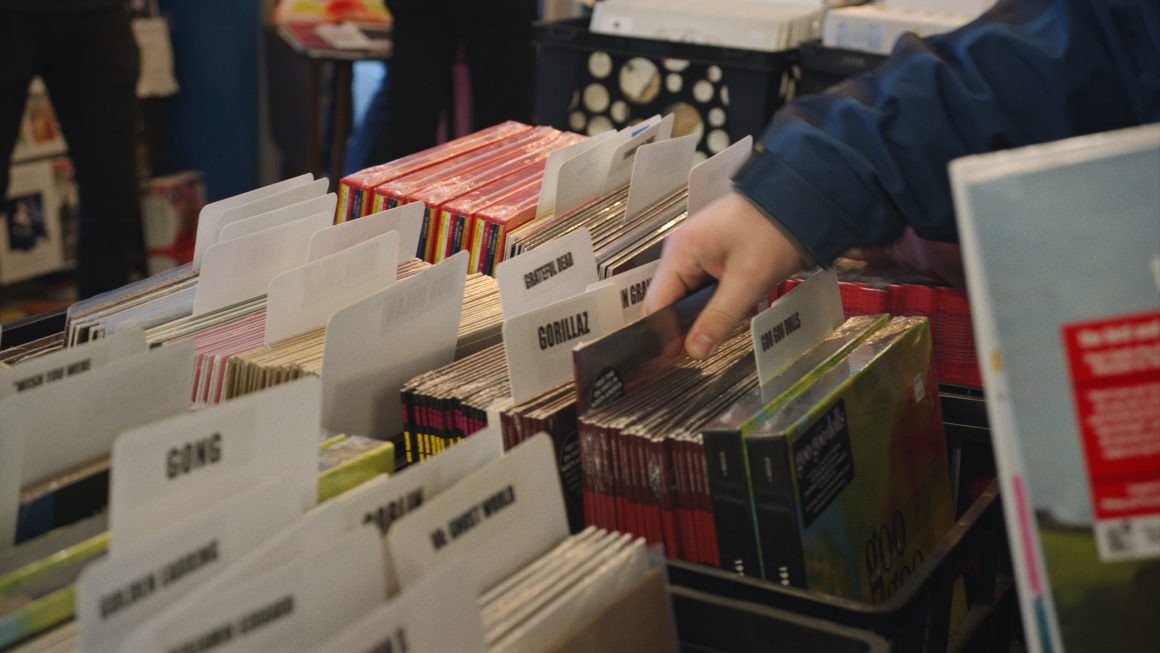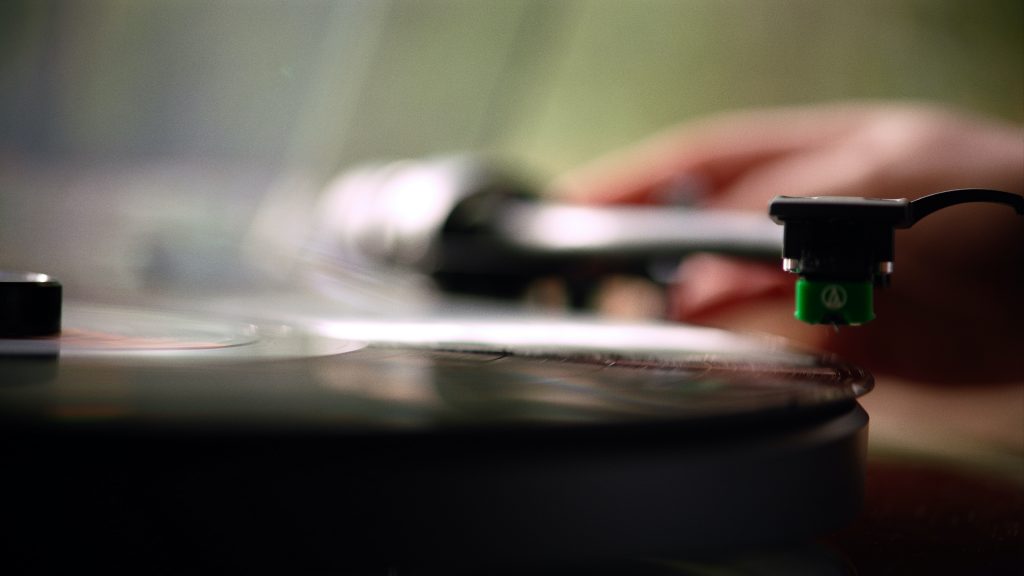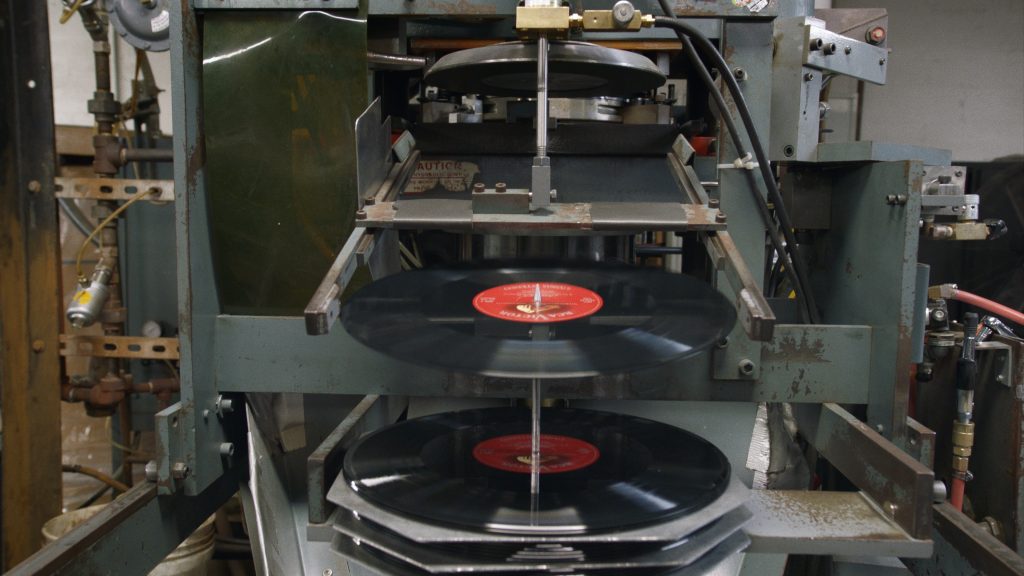
CUFF 2021 Reviews: Vinyl Nation
By Rachneet Randhawa, May 14 2021—
The movie Vinyl Nation (2020) is a documentary deep-dive into the crates of the vinyl record resurgence to discover what an old technology says about our relationship with music and to each other in a divided America. The film showcases a broad array of perspectives on everything from loyal followers and their niche obsessions, to album retail store owners.
The opening scene begins on April 13, 2019 — the annual “Record Store Day” in which swaths of avid fans line up for an event usually touted as bigger than Black Friday. After record sales dropped to an all-time low in 2007, this day was made official for the music industry by rebranding the image of the record by getting upwards of 350 popular bands and artists to perform everything from Metallica to Ozzy Osbourne. The goal of Record Store Day is to destigmatize the idea of listening to vinyl as exclusive and diversify listening to vinyl for all audiences.
But what is real music? One commentator from the film mentions that it is sound or vibration alongside frequency of sound per second which together melds to create music or a unique collection of frequencies. One of the initial questions asked in the film was what the purpose is of vinyl records? For starters, listening to a vinyl record is an experience as you’re not listening to a single song but rather a whole album and its story. You are not merely listening to invisible vibrations in the air, but when listening to a vinyl record you are breaking the seal, carefully putting it on the turntable and dropping the needle for the first time — almost like performing a ritual. Every record can have its own unique sound depending on who owned it, passed it on and where it’s been.
The first 70 plus years of the music industry were reliant on vinyl or shellac and circular 12-inch format records which succeeded because of their large album size and bombastic colours and artwork. Then came the so-called LP era. The pop culture trend was to own records as not just forms of entertainment but pieces of curated art. This changed in the 1970s when cassettes and 8-tracks were introduced and in the 1980s CDs (compact discs), with their digital format, provided better frequency and dynamic range. In the 1990s, record sales had reached their peak as the value of vinyl dropped and people began selling their collections. Vinyl became unpopular due to its bulkiness, inconvenience and were considered easily damaged.
Of the many record store owners interviewed, the audience of vinyl are the most loyal and dedicated who, for instance, treat the exploration of a record bin like a social experience and also a strategy of browsing for the sweet-spot record buy. A commentator mentions the “most passionate weirdos” who get a thrill in the tiny details like a different back cover or labelling — for instance the Stooges re-release on LP. For others, they crave the emotional experience that listening to vinyl offers, including alleviating symptoms of depression by changing their “frame of reference” via a David Bowie album.
The store owners also mention the typical audience listening to vinyl is becoming more diverse and inclusive. Historically, women and BIPOC individuals were an overlooked sector but now listening to and collecting vinyl is no longer hipster and elitist catering to boys and young men. This is reflective of the rise of women DJ’s like the Chulita Vinyl Club forged as a sisterhood and platform for girls and women across seven different cities. Vinyl is also becoming more mainstream with companies like Urban Outfitters and their promotion of retro music making entry-level turntables a popular trend via Crosley brand vinyl record players. Touted as the so-called “Crosley Shrines” on Instagram for many new to vinyl, this discovery is an extension of their personality.


A lot goes into making the record itself. For starters, you require a functional band and vision, a good studio, a good engineer, a lacquer cutter and a platting person. Initially, someone has to handle the lacquers and duplicate them. Next, cleaning and sensitizing is followed by the plating tank in which a final copy master or stamper is made including any repairs and will be to be used to press the records. Vinyl is heated up in stages to make a puck and then compressed into a biscuit shape. If everything goes according to plan, the stamper will have an exact mirror image of the original copy. After a cooling down period, records are hand inspected for defects and centering. The goal is to have the record as concentric as possible free of ticks, scratches, pops, stains and scratches — so it can be a stressful process!
The sale of records, although many people complain that prices for records are higher nowadays compared to the past, is a misconception. As one commentator mentions, the price is fair because it’s set on three key aspects — if the artist is being compensated correctly, turning enough profits to survive as a record company and ensuring retail stores are making an income. The average price of a record in 1977 was $10 and in 2021 is $35 — it’s not actually charging more but rather it’s price inflation. Also as commentator John Vanderslice mentions, with the recent vinyl record boom, there are so many scam record sellers falsely advertising quantity over quality.
In Ventura, California, we come across an influencer for album artwork who spreads knowledge and information on vinyl records for mainstream audiences through her album cover recreations including a fun one featuring an orange tabby cat. For album art, it’s all about the display and expressing the circumstances in which the album was made. There are so many new age cover styles to choose from — everything from Heidelberg style jackets including an illustrated storybook attached to said album, to really high-quality packaging such as the gatefold jacket, to special coatings, foil stamping, embossing, textured coatings and novelty aspects including a unique groove pattern. The possibilities for album cover jackets are endless as their purpose is not just a cover but a full sensory experience that is incredibly rewarding.
Record shows beat buying your vinyl off of eBay any day. The Austin Record Convention was initially launched in Austin, Texas and began in 1981 with hundreds of dealers offering the niche to the mainstream of music. Although what is most fascinating about record shows is that they’ve become a generational thing, for instance, catering to parents with young kids. Overall they are not only accepted by the community but a yearly reunion for music fans alike.
Apparently, audiophiles are passionate about all the wrong things. Beginning in the late 1990s and early 2000’s music became very passive, ever more emphremal, portable and on the wind. These days with multiple options to choose from Apple iTunes, Spotify, Tidal or SoundCloud, it may seem like listening to vinyl is old school and an oxymoron. That’s not true! Streaming services are held in tandem to buying vinyl records. Streaming services have not usurped listening to physical formats of music such as vinyl but have actually complimented them by offering an on-the-go experience in which listeners can sample the songs before they commit to buying the album. Many newcomer fans want to support the artist and appreciate the extra features that come along with the album record purchase including the detailed jacket. Others have used both vinyl records and streaming services to segment their experience — that is the at-home relaxed experience of vinyl versus the on-the-go commute to school and work of music streaming services. Yet others find that having many options for listening to music is good because it allows them to truly curate their record collection (like a top 10 album if you can dig!) rather than hoarding a bunch of records they barely listen to.
One of the last things mentioned was music as performance versus music as a dialogue and discussion. Music is not simply about collecting, owning and talking about it as a commodity, but should also be performed. And what better way to get the intimate and sensual experience by enjoying the art of music as a constructive narrative and as a story by having a sit-down and listening to the whole album, each and every song, from start to finish.
